Einstein and the Light of Imagination reading Exercise
Explore Albert Einstein's journey from curious child to world-famous scientist and answer comprehension questions about the milestones that shaped his imagination.
Exercise Guide
How to complete:
Read the biography carefully and answer the comprehension questions. Focus on how each stage of Einstein's life reveals his curiosity, determination, and sense of responsibility. Take notes on important dates, locations, and discoveries so you can support each answer with evidence from the text.
Success tips:
After completing this exercise, you will strengthen vocabulary related to science, innovation, and character traits such as curiosity and perseverance. You'll also practice reading historical narratives that combine timelines with personal reflections.
- Underline (mentally or on paper) key years and places mentioned in the passage.
- Look for cause-and-effect clues that show how one event led to another breakthrough.
- Notice descriptive adjectives that capture Einstein's personality and values.
- Use the context sentences around each fact before choosing your answer.
- Summarize each section in one sentence to confirm your understanding.
Knowledge:
This exercise highlights biography reading skills, including tracking chronological order, interpreting scientific vocabulary in plain language, and analyzing how personal qualities influence major achievements. You'll encounter terms like "patent office," "relativity," "disarmament," and "thought experiment," and see how they fit within the broader narrative of 20th-century history.
Complete the Exercise
Reading Passage 1
Albert Einstein spent his childhood in Ulm, Germany, but his earliest memories were of the family home in Munich. As a quiet child, he loved to take apart toys and search for the hidden gears that made them move. One day when he was five, his father gave him a small magnetic compass. Albert was amazed that the needle always pointed in the same direction even when he turned the case. The invisible force guiding the needle sparked a lifelong curiosity about unseen rules of nature and the mysteries hidden inside everyday objects.
At school, Albert did not always fit in. He disliked strict memorization and preferred to ask "why" questions until he understood every step. His teachers worried that he daydreamed too much, but his mother encouraged his love of music and let him practice the violin. She reminded him that patient listening could be as important as quick answers, and the rhythms he played helped him notice patterns in the world around him.
Evenings in the Einstein household were filled with learning. His parents read aloud from science magazines, and a family friend sometimes brought math puzzles to the dinner table. Albert would picture the puzzles in his mind and sketch small diagrams to test his ideas, discovering that imagination could work like a laboratory when real tools were unavailable.
When relatives visited from Italy, they introduced Albert to stories about inventors and explorers who refused to give up. Inspired, he borrowed books on geometry and secretly studied them under the covers with a candle. The gradual progress he made taught him that slow, careful thinking could uncover answers no one else expected to find.
Where did Albert Einstein's earliest memories take place?
Focus on the setting described at the beginning of the passage.
What gift awakened Einstein's curiosity about invisible forces?
Think about the object his father gave him.
What amazed Einstein about the compass?
Look for the detail that captured his attention.
How did Einstein's teachers view his classroom behavior?
Consider the reaction of his teachers to his learning style.
Which activity did Einstein's mother support to help him build confidence?
Recall how his mother responded to his interests.
Reading Passage 2
After finishing his studies in Switzerland, Einstein searched for a teaching position but struggled. In 1902 he accepted a job as a technical assistant at the Swiss Patent Office in Bern. Each day he reviewed other people's inventions, checking whether the designs followed the laws of physics. The steady desk work freed his evenings for private research. He called the imaginary scenarios he explored "thought experiments" and used them to test how light and time might behave for travelers moving close to the speed of light.
Einstein often invited his friend Michele Besso to walk along the River Aare after work, debating how clocks might appear to observers on fast-moving trains. At home, he shared ideas with his wife Mileva Marić, who helped him refine calculations when the equations became tangled. The couple filled notebooks with sketches of moving beams of light, patiently comparing what their minds imagined with what mathematics allowed.
In 1905, while still working at the patent office, Einstein published four groundbreaking papers. One explained how something as ordinary as light could behave both like waves and particles. Another introduced the special theory of relativity, arguing that the laws of physics are the same for anyone moving at constant speeds and that nothing travels faster than light. His famous equation E = mc² showed how energy and mass are connected, hinting that even small amounts of matter hold tremendous energy. The final paper provided evidence for the existence of atoms by describing how pollen grains dance in water, bringing invisible particles into the realm of measurable science.
Colleagues around Europe were stunned that such daring ideas had emerged from a clerk working behind stacks of patent applications. Letters of admiration began to arrive at the patent office, and Einstein answered them during his lunch breaks, grateful that other scientists were willing to test his unconventional conclusions.
Where did Einstein work when he began exploring thought experiments?
Identify the workplace described in the passage.
What was Einstein's daily task at the patent office?
Focus on the routine described in the first paragraph.
In which year did Einstein publish four groundbreaking papers?
Look for the specific year highlighted in the second paragraph.
Which idea is part of Einstein's special theory of relativity?
Consider the statements listed in the passage.
What does the equation E = mc² suggest according to the passage?
Read the explanation following the equation.
Reading Passage 3
Einstein's ideas remained mostly within the scientific community until 1919, when astronomers photographed a solar eclipse to test his predictions. The pictures showed starlight bending around the sun exactly as Einstein had calculated. Newspapers around the world celebrated him as a new scientific hero. The shy physicist suddenly found himself traveling to give lectures, raising funds for refugees, and speaking out against nationalism and prejudice.
Journalists followed him from train stations to lecture halls, eager to describe the "professor who bent starlight." Einstein urged them to focus on the science and the teamwork involved in the eclipse expedition. He used interviews to emphasize international cooperation, reminding readers that the measurements were made by British scientists only a few years after World War I.
Even with his growing fame, Einstein kept a simple routine. He preferred worn sweaters to formal suits, walked to work with his violin case, and answered letters from students who were curious about the universe. He believed that imagination was as important as knowledge because it allowed people to think beyond accepted limits. In the evenings he gathered friends for music, playing Mozart while discussing the importance of peace and tolerance.
His dedication inspired many young scientists to pursue questions that once seemed impossible. Letters arrived from classrooms in India, Brazil, and South Africa, each one asking how to follow curiosity without losing humility. Einstein replied patiently, encouraging students to observe nature carefully, remain kind, and share ideas freely across borders.
What event brought Einstein's theories to worldwide attention in 1919?
Look for the test described at the start of the passage.
What did the eclipse photographs show?
Focus on the scientific outcome mentioned.
How did Einstein use his newfound fame?
Consider the activities he engaged in after becoming famous.
Which detail shows Einstein's preference for a simple lifestyle?
Look for the habits that contrast with his fame.
What belief about imagination did Einstein share?
Focus on the statement about imagination versus knowledge.
Reading Passage 4
In the 1930s Einstein moved to the United States to escape the rise of the Nazi party. He accepted a position at the Institute for Advanced Study in Princeton, where he continued searching for a single theory that could unite all forces of nature. Although he never completed that quest, he encouraged collaboration among scientists from different nations. His office walls were lined with chalkboards covered in equations, and visiting researchers often found him pacing barefoot, humming a violin melody while testing a new idea.
Einstein fell in love with Princeton's quiet streets, taking daily walks to chat with neighbors about everything from philosophy to the latest baseball scores. He supported refugee scholars arriving from Europe, helping them secure visas, housing, and positions so they could rebuild their careers far from danger. The community soon associated his wild white hair with generosity as much as with genius.
During World War II, Einstein signed a cautious letter to President Franklin D. Roosevelt warning that Germany might build powerful new weapons. The letter helped spark research that eventually led to the Manhattan Project, and Einstein later advocated for nuclear disarmament and peaceful cooperation. He joined global organizations that promoted human rights, insisting that scientific power must be matched with moral responsibility.
He spent his final years corresponding with world leaders and young students, reminding them that curiosity, responsibility, and compassion must guide scientific discovery. Even in ill health he answered mail from children who wondered what it felt like to imagine riding on a beam of light. His replies encouraged them to protect one another, learn from mistakes, and let questions guide their actions toward a more peaceful world.
Why did Einstein move to the United States in the 1930s?
Pay attention to the reason stated at the beginning of the passage.
Where did Einstein continue his research after relocating to America?
Identify the institution mentioned in the passage.
What long-term scientific goal did Einstein continue to pursue in Princeton?
Focus on the research aim described in the first paragraph.
What was the purpose of Einstein's letter to President Roosevelt?
Consider the concern that prompted the letter.
Which message did Einstein share in his later years?
Look for the advice he offered to leaders and students.
Share this exercise
Help others learn reading by sharing this exercise
Related Exercises
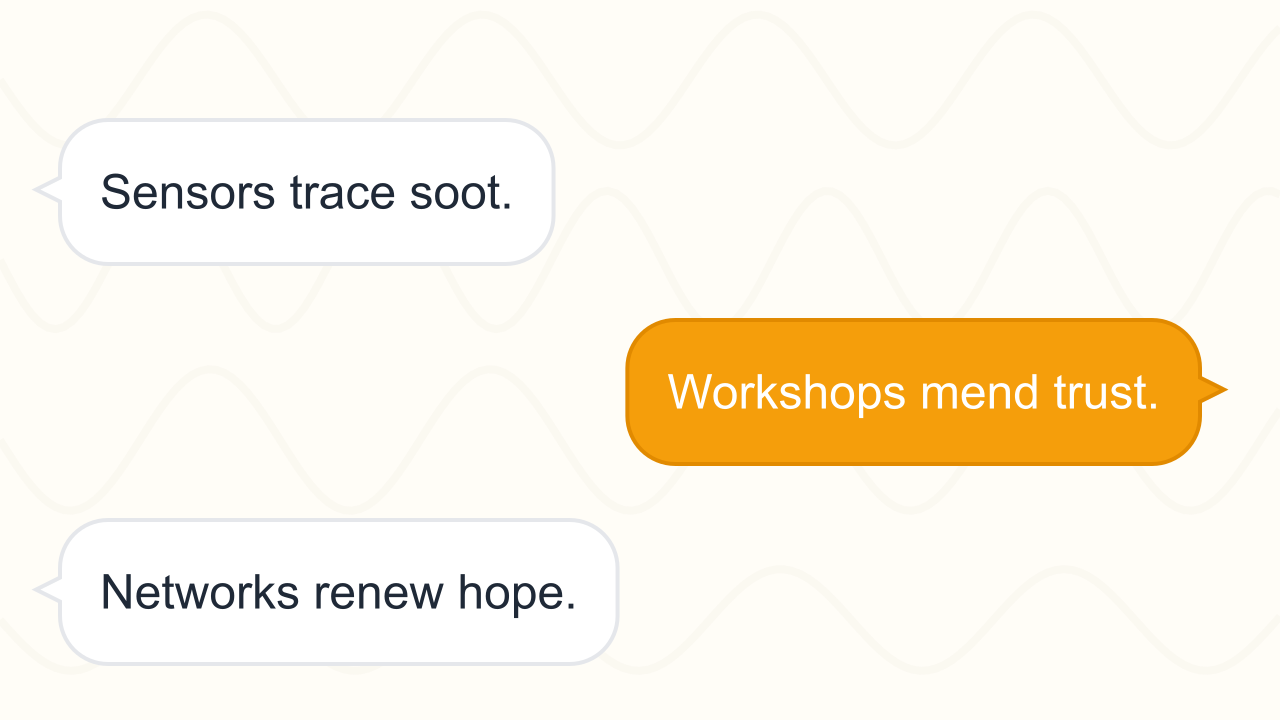
Designing Regenerative Networks for Future Neighborhoods
Trace how innovators, residents, and policymakers build interconnected solutions that cut pollution, expand recycling, and redesign everyday systems across six detailed case studies.
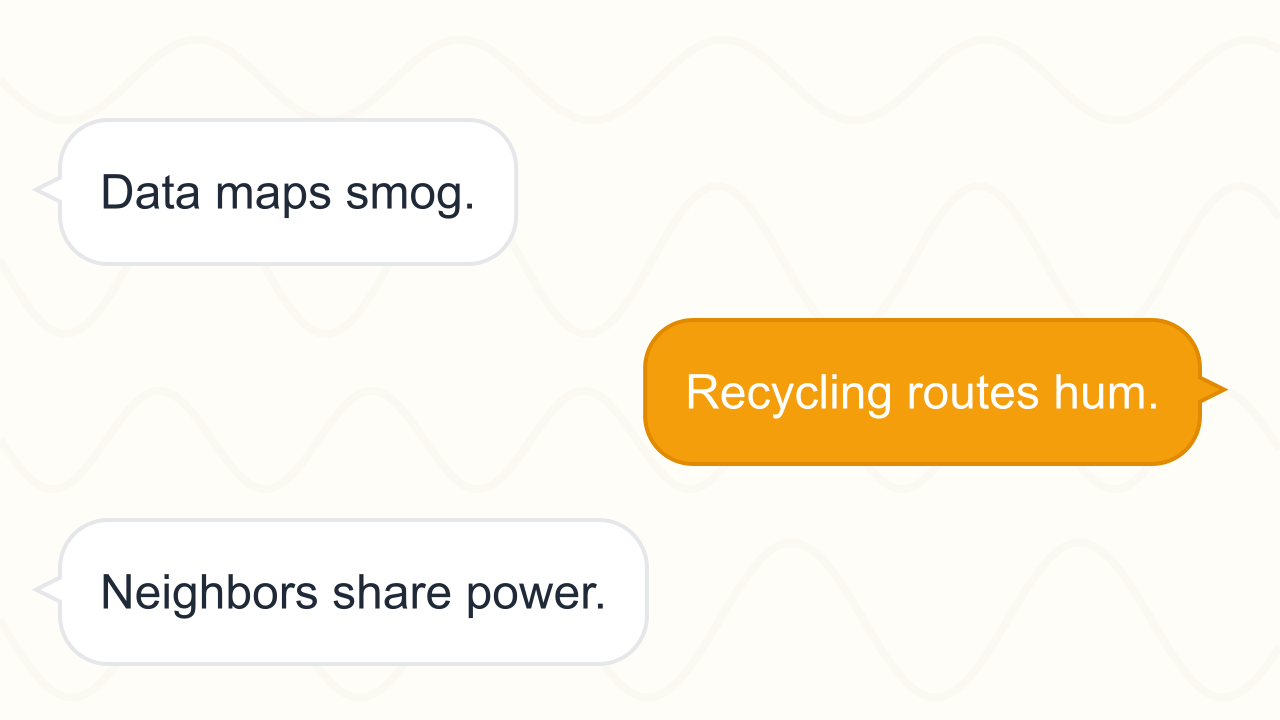
Clean Cycles for Tomorrow
Discover how neighborhoods reinvent waste systems, deploy new materials, and empower residents to shrink pollution footprints while expanding recycling access.
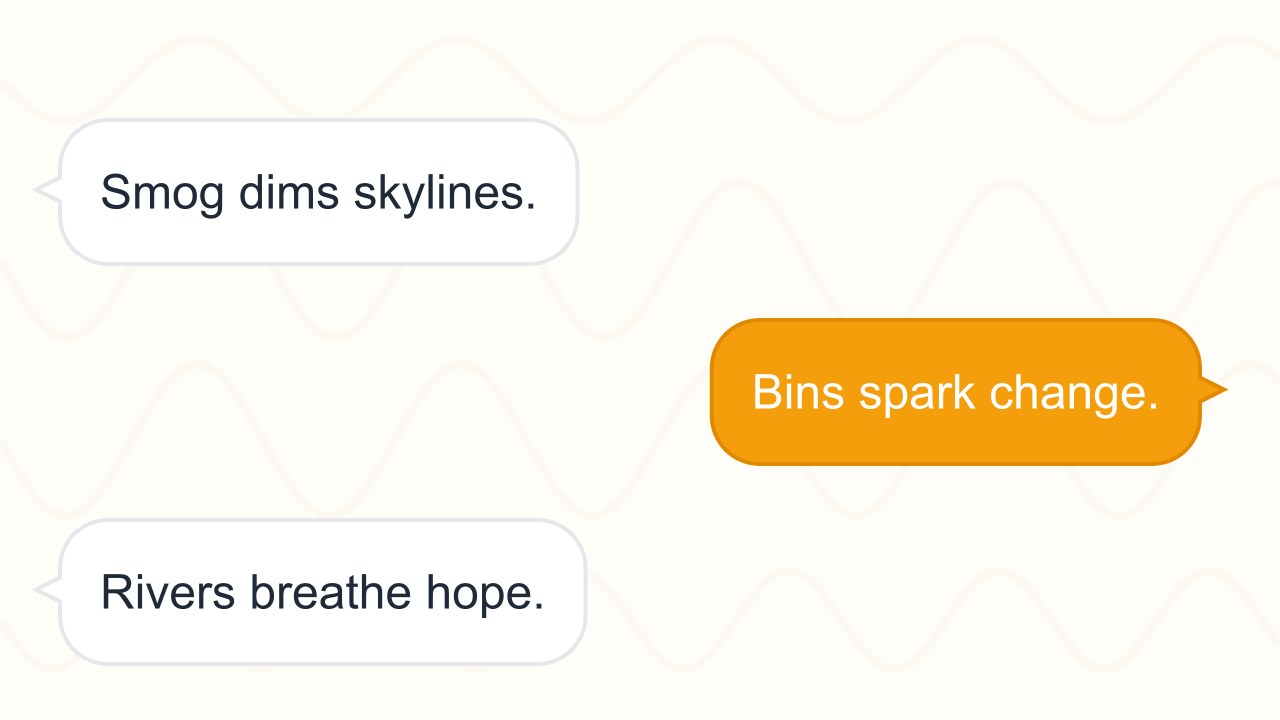
Pollution and Recycling: Restoring Our Cities
Explore how air, water, and waste pollution affect urban life, and examine the recycling innovations and community actions working to clean cities around the world.
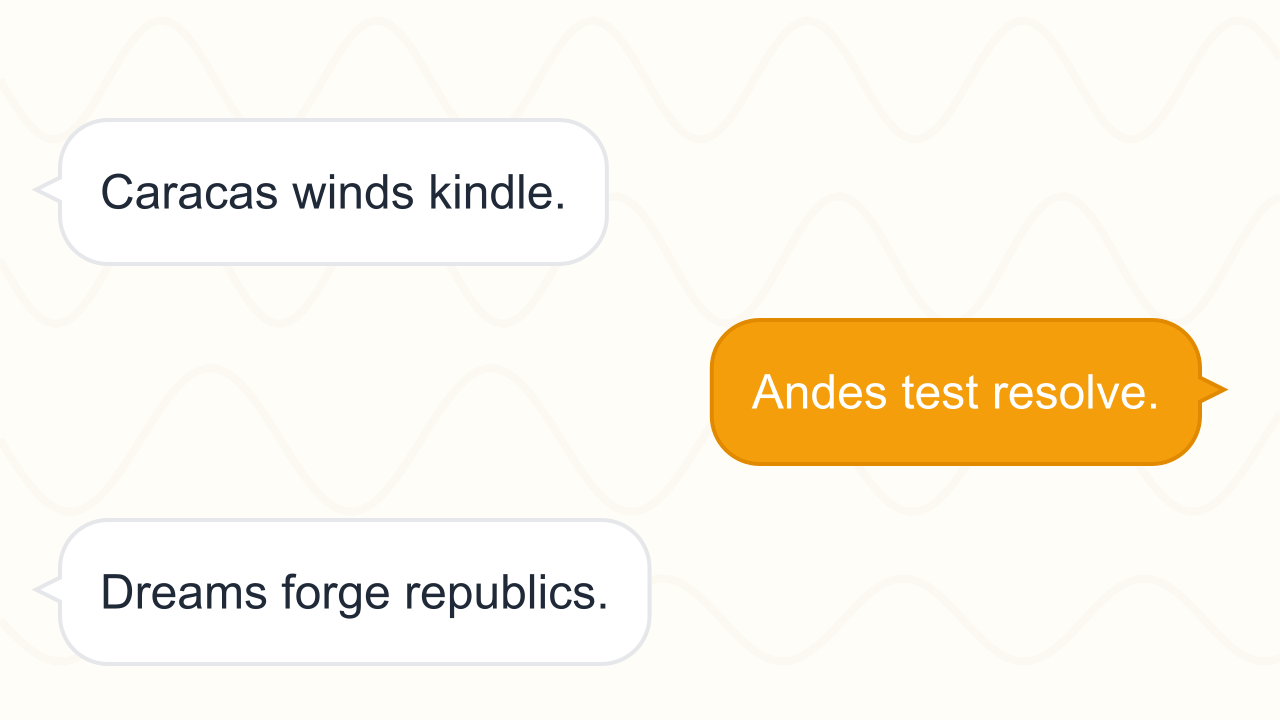
Simón Bolívar: Liberator of the Andes
Journey with Simón Bolívar from his Caracas youth through daring Andean campaigns and the struggle to define lasting republics across northern South America.
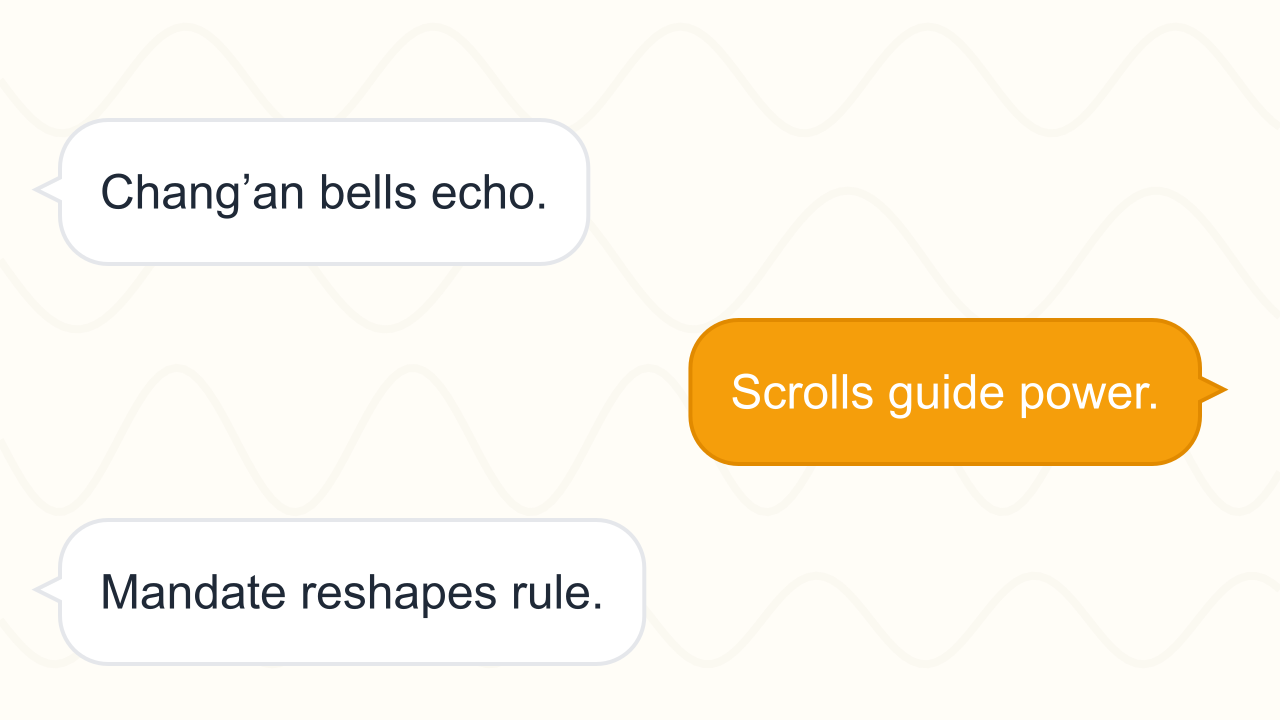
Wu Zetian: Mandate of the Tang
Follow Wu Zetian’s ascent from a palace attendant to emperor of the Zhou dynasty, examining how she wielded scholarship, alliances, and reform to shape eighth-century China.